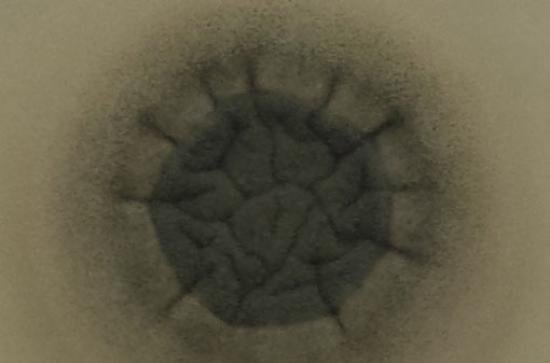
Scientists at Maynooth University and Innsbruck Medical University have discovered a new defence system against oxidative stress in the opportunistic fungal pathogen, Aspergillus fumigatus, a particularly nasty organism which annually infects hundreds of thousands of people world-wide.
Fungal pathogens depend upon oxidative stress defence systems to help counteract and avoid host defences, including the versatile armoury of the human immune system. The researchers identified the process by which a powerful antioxidant called ergothioneine, EGT for short, is made in the pathogen, and also revealed a plethora of molecular events which happen when the pathogen cannot make EGT. These included vulnerabilities like increased sensitivity to high levels of oxidative stress, altered ability to make other fungal components essential for survival and, very unexpectedly, a reduced ability to form spores. They also showed that the simultaneous deactivation of another oxidative stress protection system, mediated by a protein called Yap1, made Aspergillus fumigatus even more sensitive to oxidative stress. The work involved detailed quantitative proteomic analysis following disruption of the pathogen’s ability to make EGT, indeed proteomics is a specific and valuable expertise for which Maynooth University is internationally recognised.
Two PhD students, Kevin Sheridan from Maynooth University and Beatrix Lechner at Innsbruck carried out the lion’s share of the laboratory research. The lead scientists: Prof Sean Doyle, Maynooth University; Prof Hubertus Haas, Innsbruck Medical University; and Prof Gary Jones, Leeds-Beckett University; have a long-standing interest in fungal molecular biology.
Prof Doyle commented: “We have known Professor Haas for almost 10 years, having previously collaborated on research involving fungal self-protection systems against gliotoxin.” In a classic example of the scientific maxim ‘chance favours the prepared mind,’ the Doyle and Haas group independently identified a key gene which they reasoned could be responsible for directing EGT biosynthesis. Deciding that collaboration was the best way forward, they pooled resources and have now jointly published their work in the prestigious journal Scientific Reports.
There has been significant global research into Aspergillus fumigatus oxidative stress resistance in recent decades. However, most of this work did not, or could not, account for the fact that the EGT ‘high level’ antioxidant system was also operating in Aspergillus fumigatus. This means that a significant amount of published work must be reinterpreted in light of the new discovery. In addition, the new findings have exposed a novel and exploitable resource in this pathogen’s highly evolved defence system. This will significantly improve avenues for the development of anti-fungal drugs, by both identifying new drug targets and alerting other scientists to a completely new way that the pathogen can resist the human immune response.
Research funded by Science Foundation Ireland.
